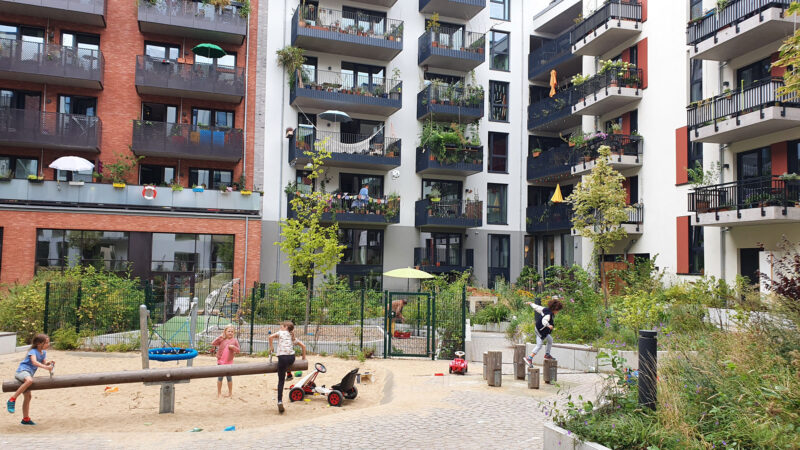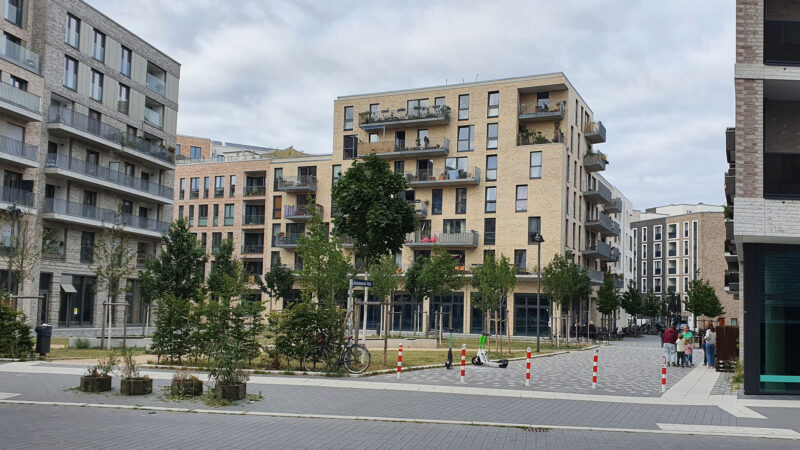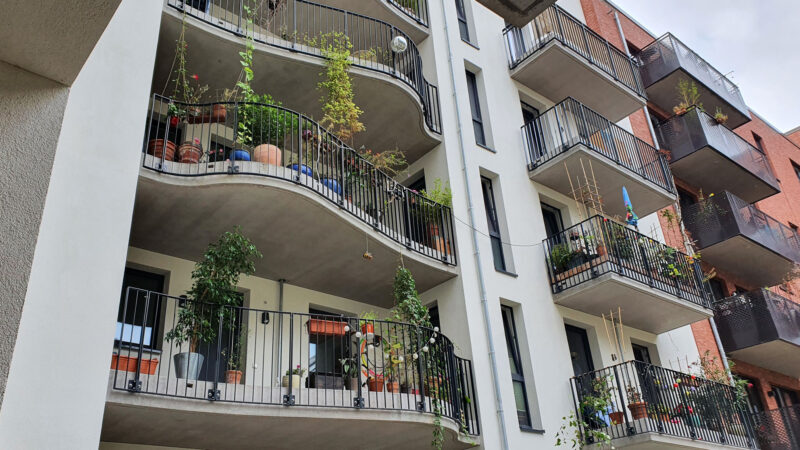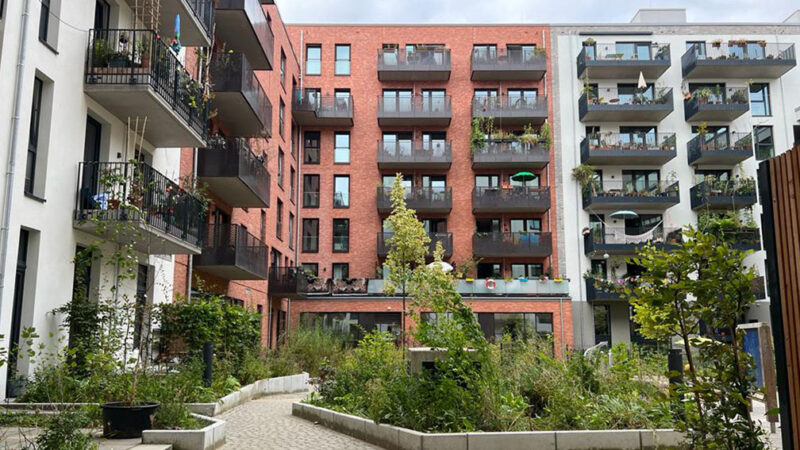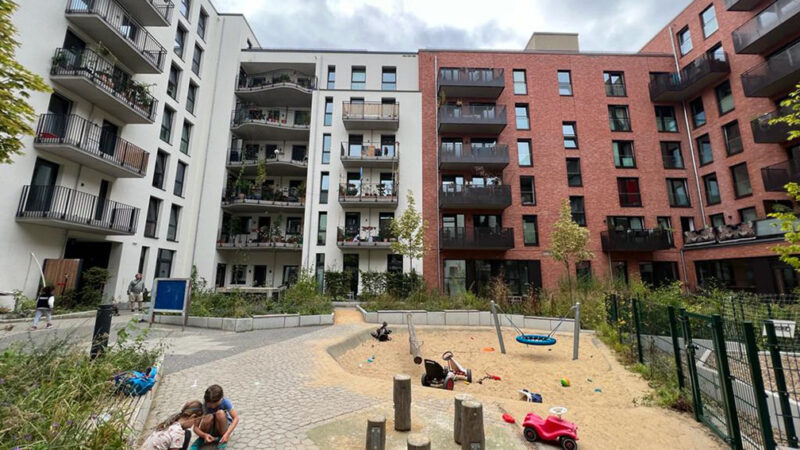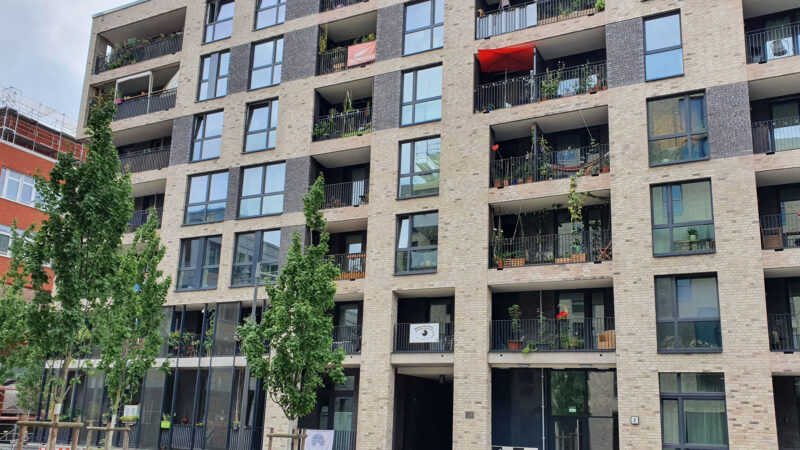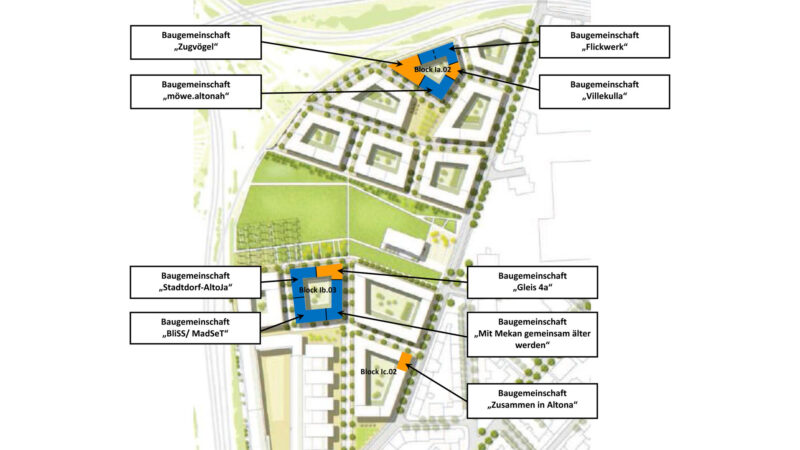Our director, Levent Kerimol reviews Hamburg’s support for community led housing
I’m always mindful about context before making generalisations and comparisons of community led housing in other European countries and note that this context is always evolving. I’ve visited Freiburg, Almere, Berlin, and Zurich over the past 10 years, and was in Hamburg this summer with my family, with only a short time to look into community led housing.
Hamburg is Germany’s second-largest city with almost 1.9 million inhabitants. It is also its own state within the federal system, which results in some variations in approach to different parts of Germany. Hamburg has a long history of co-operative housing linked to the trade union movement in the 1900s and then alternative anti-authoritarian squatting movements in the 1960s and 70s covered in more detail in David Scheller’s chapter in Contemporary Cohousing in Europe.
I met officers from the Ministry of Urban Development and Housing in Hamburg, including those working on affordable housing funding programmes and from the Agency for Baugemeinschaften (building/housing communities), a small team of 3 or 4 people, who work within regional government as a central contact point. The Agency keeps a register of groups, advising on process and funding, and offering public land / properties. There has been political support for this approach since 2003, and programmes have been developed and refined over that period.
Hamburg has around 977,000 dwellings, and 76% of households live in rented housing. The state-owned housing company, SAGA, owns 136,000 homes, and around 135,000 are owned by co-operatives. Developments over 30 units are typically required to provide a mixture of a third social housing, a third market rent, and a third private ownership. Market rents are subject to controls, and subsidised affordable housing has to have lower rents and eligibility criteria for a minimum period of 30 or 40 years, after which they can be let at market rents. There is funding for intermediate rented products, but intermediate ownership is not part of the general landscape. There are detailed tables breaking down funding rates for unit sizes, income levels, and how they are supported by a mixture of one-off grants and ongoing grants paid to the landlord to make up the difference. The state government also works closely with the state bank in offering low-cost loans.
Most Baugemeinschaften projects take the form of rented co-operatives, unlike some of the ownership focused schemes in Berlin of Freiburg. There are 3 funding programmes with their own rates and criteria:
- Small Baugemeinschaften developing their own schemes formed the bulk of projects in the 1990s and 2000s. This is has become more difficult with increasing values and the limited availability of public land, and these types of schemes currently form 20% of projects. Funding criteria state minimum numbers of households on the lowest incomes and maximums for higher income households to ensure mixed tenure schemes. Groups have to recruit a membership that fits these eligibility criteria. There are also adjustments to funding for energy-saving / sustainable building, accessibility, lifts, car sharing, compact buildings etc.
- Baugemeinschaften working with established bigger co-operatives (which could be equivalent to working in partnership with a housing association in England) now forms around 20-30% of projects. These established co-operatives are approved by the Agency to work with Baugemeinschaften. There are slight differences to the funding programme, but this is generally seen as an easier way to deliver projects, even if the social value may not be quiet as rich.
- Acquisition of existing properties by tenants’ co-operatives make up around 20% of projects. There are loans up to 90% of the building value, at market interest rates and ongoing grants for households within the income limits. At least 51% of resident households have to be within the small to medium income limits, and the co-operative needs to have 10% equity. The combination of these factors means many groups are currently finding this route challenging with high prices.
- Finally, there are around 20-30% of projects proceeding without funding, negotiating with private landowners or purchasing public land at market rates.
The Agency for Baugemeinschaften works with other teams to release municipal development land specifically for groups. This is like using the GLA’s Small Sites x Small Builders programme specifically for CLH, but the land is held in a single public body, and sites can be identified in a way that contributes to wider urban development strategies.
As the planning system is generally less negotiable and more pre-defined than in the UK, what can be built on a site is more clearly known by all at the outset. This makes it easier to pre-determine fixed land prices. In marketing sites for Baugemeinschaften, a series of expected land prices are set, depending on the mix of affordability proposed by a group. This means there is no negotiation or scoring on the land price offered. Instead, proposals are selected on the basis of other factors, such as their governance, social concept, wider offer, community spaces, and specialist provision etc.
Successful groups have a fixed window to complete the transaction in which time they can carry out all necessary due diligence and get planning permission. Groups are advised to work with construction / development managers such as Stattbau or the Lawaetz Foundation who specialise in these kinds of projects. The planning process has similar costs as in the UK but is considered to be less risky due to the prescriptive nature of the planning system. Groups typically have to pay for the early stages and planning process themselves, often through their own member contributions, which are considered a form of deposit. It is acknowledged that members can’t necessarily get this contribution back if they leave the co-op in future, but this appears to be attractive to many in more intermediate circumstances, whose deposit contributions would not allow ownership anyway.
The process can still take a long time, from 5-8 years, and many groups do not progress beyond the initial formation and site identification stages. The success factors were identified as being communication within the group, and their flexibility around the project.
Between 1990 and 2022 there were 142 Baugemeinschaften who built 3,277 apartments. That’s roughly 100 homes per year. Although this is probably greater in recent years, as there are 370 units under construction from 15 groups, and 11 groups have 327 apartments in the planning phases.
The city-state intends to increase the numbers of Baugemeinschaften and move to around 20% of all public development sites, particularly in new development areas, as they are seen as bringing stability to new areas. In the Wilhelmsberg development area of 4,500 apartments, 900 are planned as Baugemeinschaften. Demand for these opportunities has continued to be sufficient with 40 groups applying for around 30 spaces, even though the location is somewhat less desirable. In more sought after locations demand for sites typically exceeds supply by over 10 times.
There are many examples to see. I only had time to walkaround the Mitte Altona masterplan area, where two courtyard blocks (out of 11) were built by the 8 Baugemeinschaften listed here, each taking a corner or part of a block. It would be nice to think these blocks were visually recognisable as community led housing, however they were indistinguishable to the other blocks. Shared courtyards with playgrounds and children running freely were not unique to the Baugemeinschaft blocks. Perhaps there was more differentiation internally, or in the social governance, or perhaps because the tightly controlled planning system and wider development industry adopts general good practice in housing design.
Perhaps if we are to see CLH as part of the mainstream, we have to acknowledge that it may not be as special, unique or innovative as we like to think of it. Although this could be a good thing if it raises expectations across the housing and built environment sector more generally. However either way it is clear the community led housing sector needs sustained support over several decades, as in Hamburg, to achieve this kind of mainstream impact.
